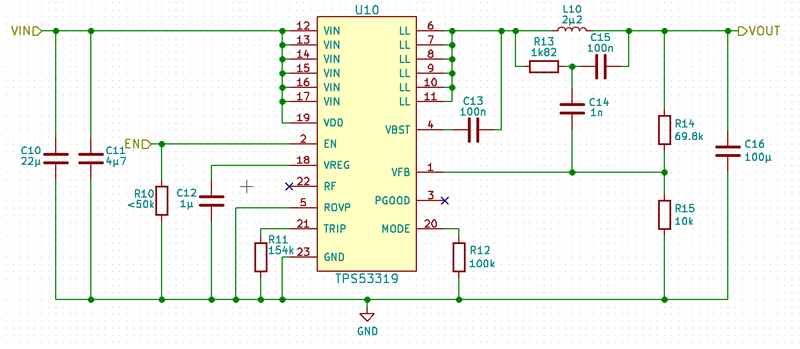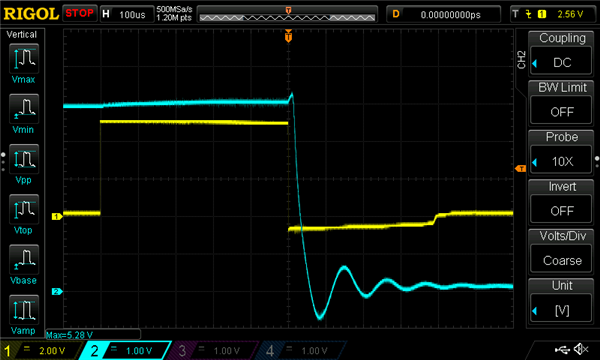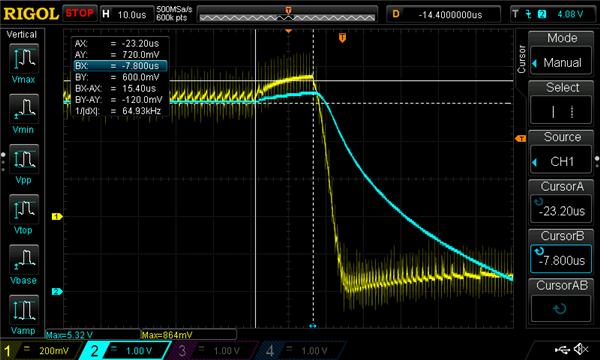Hello,
I have a problem with a stepdown circuit based on the TPS53319, which is supposed to generate 5V at max. 10A from 6-19V. The following schematic was copied from Webbench (the component values were verified using the formulas from the datasheet and seem to be correct, C16 is actually 2x 100µF):
The regulator works fine under constant load and a quickly rising output current is no problem, however when the output current quickly falls from some value to a lower value, the regulator switches off.
This can for example be triggered by going from 10A to zero but also when going from just 0.5A to zero or from 1A to 0.3A. Conneccting a 1mF electrolytic capacitor across the output seems to solve the problem, but there is no space for it on the PCB.
The output voltage looks fine up until the switchoff, with just a little bit of a voltage increase shortly before (should not be enough to trigger the overvoltage protection).
Does anyone have any idea what this could be caused by? Could the layout (not ideal due to space restraints) be the problem, even tho the regulator is working fine at full load?
Thanks and Kind Regards,
Daniel




